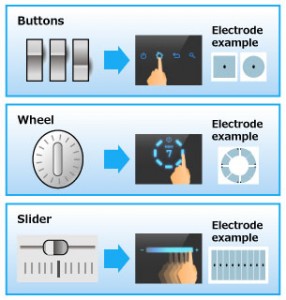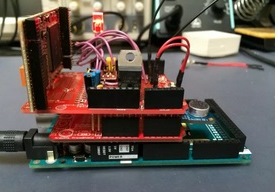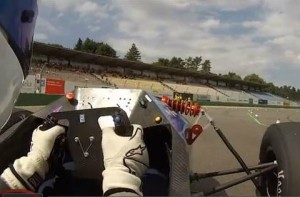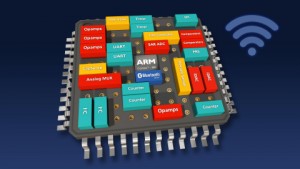Industrial display design is being driven by the expectations of the consumer market, which makes use of bespoke products that bridge the gap between the flexibility of fully custom design and cost benefits of off-the-shelf, writes Ben Savage.
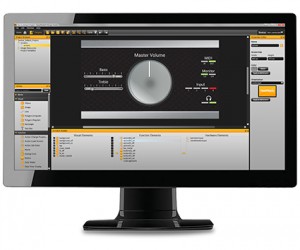
This bespoke design platform allows simple construction of multiple applications
It seems inappropriate to describe the electronic systems used in industrial applications in the same terms as consumer technology. However, we are increasingly seeing the users of industrial systems demand the same functionality and user interfaces as those that are now commonplace in consumer devices.
This is particularly apparent among industrial systems designers, who want to enjoy the same customisability that has today become almost standard in the consumer market.
Not only are we seeing modular smartphones that allow you to build your device just the way you want it, but there are 500,000 different configurations of the Fiat 500, for instance, and it’s simply a matter of clicking through a website to customise and create a unique pair of trainers.
This expectation, no doubt in part because industrial designers themselves are also consumers, is now reaching the industrial sector – particularly with regard to panel meters and displays. This may not be affecting end users, but system specifiers themselves expect far more flexibility from their panel instruments.
They increasingly need instruments that can be tailored to a specific application or function. This functionality also helps them to ensure the delivery of end systems in which the instruments embedded are better suited to the function they are designed for. It also helps them to stand out from the competition.
Bridging the gap
Panel instruments continue to play a key role in a number of industrial areas, assisting in monitoring a variety of environmental variables.
As the market for the product is well established there is a wide range of off-the-shelf devices available to suit many application needs.
Engineers and system designers also always have the option of taking the bespoke path, developing their own custom panel to suit their specific needs. However, neither option currently offers the true modern consumer-style experience.
Fully custom instruments and displays can offer developers the ability to tailor them to their own particular requirements, even in the most niche and specific cases.
Furthermore, these custom devices are able to deliver a level of functionality and usability greater than that of an off-the-shelf device – in the right hands, of course.
The price to be paid is a long and costly design and development phase. By comparison, off-the-shelf displays have the advantage of requiring zero development investment, today often providing plug-and-play functionality at a relatively low cost.
But this of course means each individual system is inherently inflexible, making it difficult to tailor the performance, look or feel of a panel display to ensure that it provides the exact mix of functionality a user might want.
As a result, off-the-shelf displays are only really suited to non-professional use, or in areas that only have straightforward application needs. This is often in less critical areas where the developer can be satisfied that it was at least quick and cheap to install.
Best of both worlds
But what we’re increasingly seeing is that specifiers and systems designers do not want to choose between off-the-shelf or custom displays. They want the best of both worlds: the low cost and speed of deployment of a standard solution, with the benefits of tailoring that a bespoke device provides. I see this as a brand new product category, driven by the consumerisation of attitudes that bridges the gap between fully custom and off-the-shelf solutions – products that are bespoke-as-standard.
Take the example of a control room where there are three or four displays showing different parameters. Typically, these displays would all be the same off-the-shelf device meaning the only way of telling which display was displaying which parameter would be to physically label them.
This might seem a practical solution to the problem, but it is clearly not without its limitations. This is particularly the case in more dangerous environments, where labels can be lost or become illegible.
By comparison, a bespoke-as-standard approach to device development would mean the installer could quickly alter the appearance or behaviour of the readings on the display itself. As a result, operators would be able to quickly distinguish between units.
Adapting to change
These changing demands present a big challenge for manufacturers and how they approach the development of the next generation of panels. Adapting to the bespoke-as-standard mindset will require the market to change how it conducts itself, but we are finally starting to see this happen.
Customers are already expecting this functionality. Many are now explicitly demanding the ability to achieve a higher level of customisation without long development times or writing extensive quantities of code. As manufacturers work to meet these shifting expectations we expect that the market for panel displays of this type will grow rapidly.
The industrial sector is ultimately no different to any other. Engineers are consumers too and, as they came to expect this functionality from their consumer products, it was really only a matter of time until their expectations of the systems they use in their jobs began to match.
This is the same process we’ve seen elsewhere, and it is already well established in a number of sectors, particularly in IT. Even within the industrial space, these changing expectations are affecting a wide range of industrial and manufacturing tools and products, not just displays.
While this does present a challenge for device manufacturers, the positive side to this change is that it also offers a major new opportunity for innovation in the market.
I only expect this trend to gather pace in the coming years, and it will represent a major shift in how the industrial sector approaches its products.
Both off-the-shelf devices and custom development approaches are unlikely to be going anywhere in the near future, but it won’t be long until comparisons between industrial devices and consumer products will not seem so unbelievable.
Ben Savage is a business manager at Lascar Electronics
Richard Wilson




